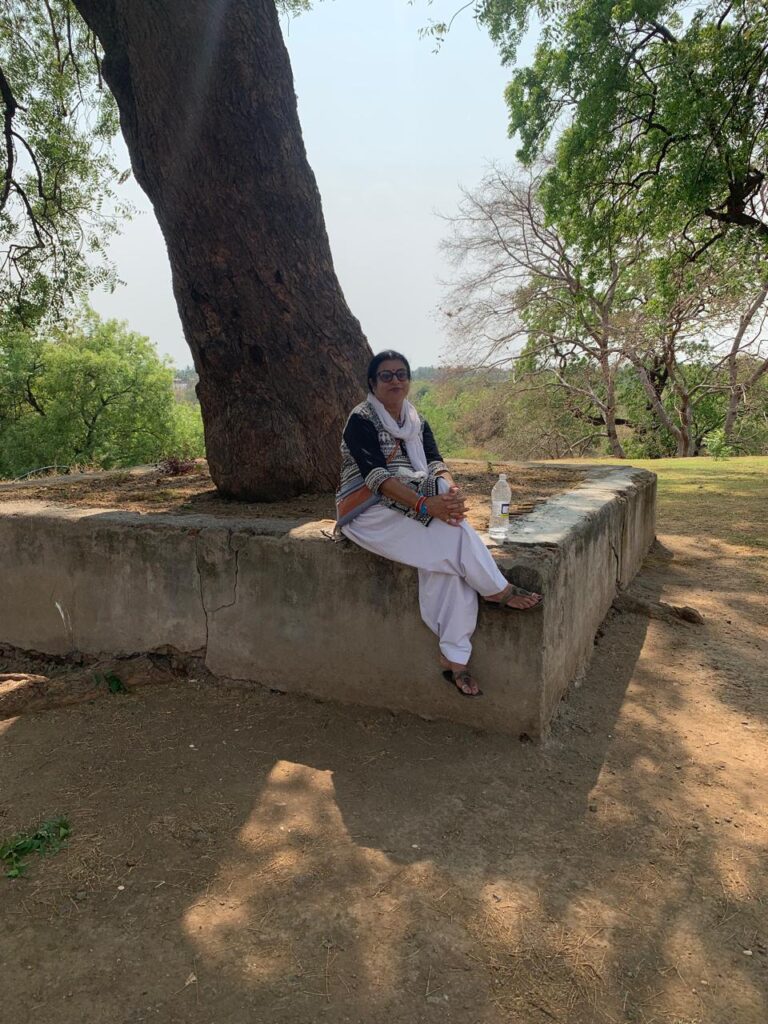A Visit to Panchakki: Unveiling the Marvels of Medieval Indian Engineering:
By Lokanath Mishra
As I stepped into the historic Panchakki complex on 30th March 2025, I was struck by the ingenuity and craftsmanship of medieval Indian engineers. Located in the heart of Aurangabad (now Chhatrapati Sambhaji Nagar), this ancient water mill is a testament to the innovative spirit of our ancestors.

As I explored the complex, I was fascinated by the intricate network of underground water channels that fed the mill. The sound of gushing water and the sight of the grinding stone in motion transported me back in time, giving me a glimpse into the lives of the people who once lived and worked here.

The Panchakki complex is not just a water mill; it’s a thriving community that has been in existence for centuries. The dargah of Baba Shah Musafir, a revered Sufi saint, is located within the complex, and the air is filled with an aura of spirituality and tranquility.
As I wandered through the complex, I was struck by the architectural marvels that surrounded me. The mosque, madrassa, court, minister’s house, library, and houses for women all stood as testaments to the vision and craftsmanship of the builders.

The Panchakki complex was more than just a place of worship or a center of learning; it was a thriving community that catered to the needs of pilgrims and locals alike. The water mill, which was originally used to grind grain for pilgrims, was a vital part of the complex, providing sustenance for the body and soul.
As I left the Panchakki complex, I felt grateful for the opportunity to experience this piece of history. The medieval Indian engineers who designed and built this complex were truly visionaries, and their legacy continues to inspire and awe us to this day.
As I wandered through the historic Panchakki complex, my eyes fell upon a majestic banyan tree that stood tall and proud, its sprawling branches stretching towards the sky like nature’s own cathedral. This ancient tree, with its gnarled trunk and twisted roots, seemed to embody the very spirit of the complex, exuding a sense of tranquility and timelessness.
According to local legend, the banyan tree is as old as the Panchakki complex itself, dating back to the 14th century. Over the centuries, the tree has been a silent witness to the joys and sorrows of the people who have lived and worshiped here. Its massive trunk has been a symbol of strength and resilience, weathering countless storms and seasons.
The banyan tree is also considered sacred by the devotees who visit the Panchakki complex. Many believe that the tree has healing properties, and its leaves and branches are often used in traditional medicine. Others see the tree as a symbol of spiritual growth, its sprawling branches representing the journey of the soul towards enlightenment.
As I sat in the shade of the banyan tree, listening to the soft rustling of its leaves, I felt a deep sense of peace and connection to the natural world. The tree seemed to be a reminder that even in the midst of chaos and uncertainty, there is always beauty and tranquility to be found.
The banyan tree of Panchakki is a testament to the enduring power of nature and the human spirit. It stands as a symbol of resilience, spirituality, and the interconnectedness of all living things. As I left the complex, I felt grateful for the opportunity to experience the beauty and wisdom of this ancient tree.
